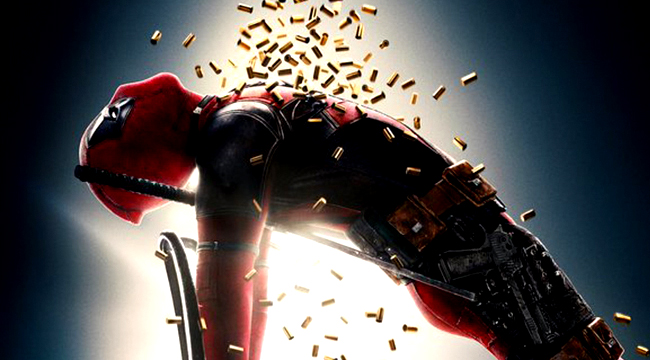
Earlier this month, a new study from the Annenberg Public Policy Center out of Philadelphia advocated for a PG-15 rating on all films containing gun violence. The study arrived without much fanfare until, inevitably, the latest school shooter killed 10 people at Santa Fe High School in Galveston County, Texas. On that same day, the second season of Netflix’s 13 Reasons Why (which may, according to UPROXX’s Alan Sepinwall, have no substantial reason for returning) canceled its premiere party out of respect for the victims.
The season, which is still available for streaming on Netflix, includes an episode about a teen who plots to murder his fellow students with a massive arsenal. Clearly, Netflix felt that creating hoopla and celebrating the show would be improper in close proximity with a mass shooting, which has recently become a common refrain (Eli Roth’s Death Wish remake and the Heathers TV reboot were both rescheduled after mass shootings). In the case of Death Wish, the film that eventually surfaced never really explained why it needed to be remade as toothless commentary. Yet one wonders — will there ever be a “proper” time to thematically tackle gun violence within a film or TV episode?
The answer to that question would be no, since these events likely won’t stop happening until something is done with America’s gun laws to curb them, but here’s a different question in regard to parental associations: when it comes to film ratings, would a PG-15 rating make any difference? Once again, probably not. An extra cushion of two years from a PG-13 rating would not stop anyone who’s intent upon carrying out a shooting, no matter their age.
To assume that a new film rating system could curb mass shooters is, obviously, a drastic oversimplification of a complex issue. It’s also important to differentiate here between films like Death Wish, which aim toward social commentary, and summer blockbusters, which only aim to entertain while including gun violence. There’s also the fact that nothing has changed over the decades as far as violence in popcorn flicks go. In a new Deadline column, Michael Cieply points out how, as always, all of the major studios have gun-filled tentpole releases throughout the summer. And as Cielpy argues, there’s nothing amiss because one can’t really pinpoint entertainment as a cause for violence.
Indeed, films haven’t grown more violent in recent years. Fans watched the Star Wars heroes take out their foes in the late 1970s, and they’ll do so in 2018, which boasts a summer full of gun violence at the movies. Hell, at one point in Deadpool‘s opening credits, the antihero literally luxuriates in a shower of bullets (as a Flashdance throwback), and all the way to the (SPOILER ALERT) end-credits scene, the film elicits belly laughs through ultraviolence. It’s also fair to assume that Chris Pratt will be toting a rifle again in Jurassic World: Fallen Kingdom. And while these films don’t pretend to be anything but violent, they don’t arrive with preachy commentary for or against gun control.
To further complicate the issue, mass shootings really haven’t become more frequent since the 1970s, but they’ve become more deadly. And given that social media is ubiquitous, people possess the ability to be as prolific as they desire with their opinions after these tragedies.
It’s also unavoidable that actors who make millions while toting guns in movies will be criticized when they call for gun control. As a quick example, Morgan Freeman is one of many actors who are quick to criticize congresspeople who accept NRA money. Freeman, like most seasoned actors, has starred in numerous films revolving around gun violence, and the starkest examples include Wanted (as the leader of a group of assassins) and Lucky Number Slevin (as a crime boss). Is Freeman being hypocritical?
Some believe this is the case, and the arguments are endless. A few years ago, Kurt Russell was taken to task when cornered by Jeffrey Wells of Hollywood Elsewhere. All Russell wanted to do was promote Hateful Eight, and he protested being asked about politics during the interview, but he eventually relented and expressed his opinion that gun control wouldn’t prevent terrorism, despite the recent San Bernardino shooting fueling arguments that existing laws didn’t go far enough. Russell’s point was that terrorists also employ bombs, knives, and vehicles to kill people, and one can’t outlaw everything.
Russell had a valid point. If mass shooters were unable to acquire guns, they’ll find another way to murder and maim. It doesn’t make a lot of sense to make vans illegal, but vans are now being used by terrorists to kill civilians around the world. And asking filmmakers to stop portraying violence isn’t a solution.
The bottom line is that it’s easy to point fingers, and scapegoating Hollywood makes some people feel a little safer, as if placing more restrictions on violence in movies will somehow stop mass shootings. Yet here we are, 19 years after the Columbine massacre, for which Marilyn Manson was blamed, and as he argued in Michael Moore’s Bowling For Columbine, it’s a more plausible theory that teens could be more influenced by President Clinton’s bomb-dropping on Kosovo than a few rock ‘n’ roll songs.
Of course, Manson oversimplified the argument, which he likely did for effect, and that’s what happens with all these shootings. Overall, he illustrated why it’s impossible to blame the rising mass shooting casualty rate on any one source, especially when it comes to entertainment. Of the Columbine shooters, Manson also stated, “I wouldn’t say anything. I’d listen to them, which nobody else did.” That’s a lesson that parental associations would be wise to heed, decades later, rather than fiddle with a film ratings system.






